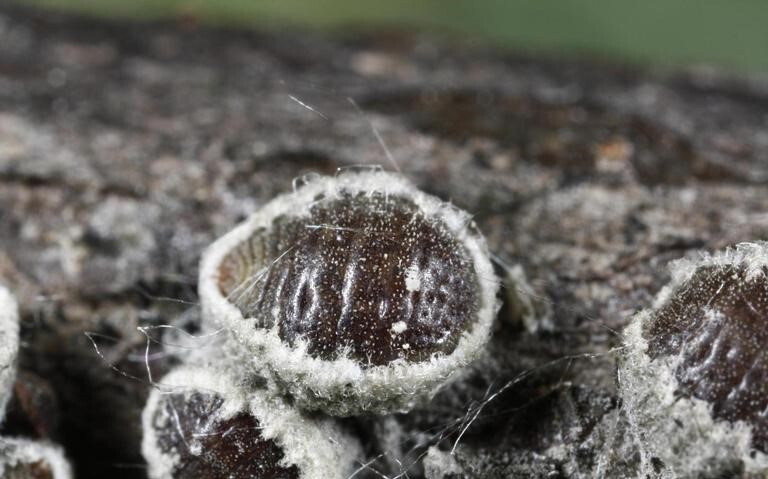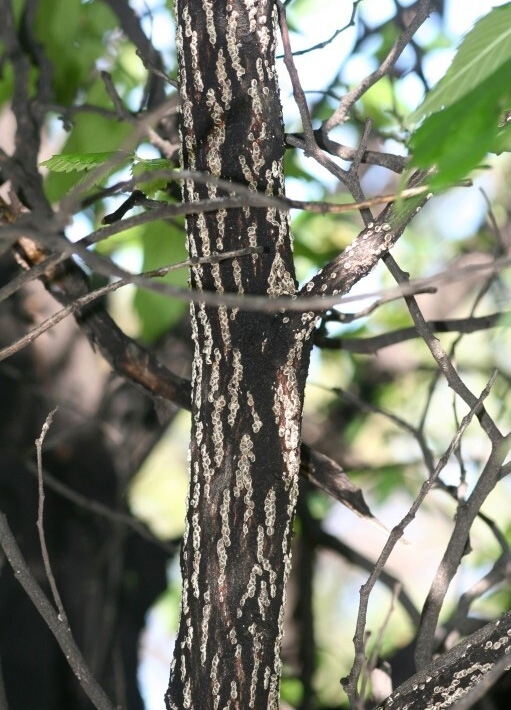European Elm Scale (Gossyparia spuria)

Figure 1. European elm scale adult. Photo by J. Berger, Bugwood.
Host
Elm trees.

Figure 2. European elm scale on bark. Photo by W. Cranshaw, CSU, Bugwood. Larger image (157KB)
Damage and Symptoms
The scale extracts fluids from the phloem of the tree, causing premature yellowing of leaves, especially on the lower branches. Heavy infestations can cause twig drop. The scale excretes excessive amounts of honeydew as a waste product, and black sooty mold can develop on this honeydew.
Life Cycle
The scale overwinters as a nymph at the base of buds in cracks of bark or twigs. At the end of June/early July, the female lays eggs that hatch into bright yellow active crawlers within several days. The crawlers will reside within grooves along the midrib and prominent veins on leaf undersides. The scale remains immobile at these sites for the remainder of the summer. There is one generation per year.
Management
The scale can be controlled prior to bud break with dormant oils. It can also be controlled during the crawler stage with a contact insecticide. Systemic insecticides with the active ingredients imidacloprid or dinotefuran can be used in the spring following leaf expansion. Resistance to systemic insecticides with the active ingredient imidacloprid has occurred with this scale insect.
Further Information
To learn more about the topics discussed on this page, contact the Schutter Diagnostic Lab. If you suspect an infestation on your property, contact your local extension agent, the Schutter Diagnostic Lab at Montana State University, or the Montana Department of Agriculture.
This fact sheet is also available as a printable PDF (303KB).
Disclaimer: These recommendations are provided only as a guide. It is always the pesticide applicator’s responsibility, by law, to read and follow all current label directions for the specific pesticide being used. The authors and Montana State University assume no liability resulting from the use of these recommendations. The Montana State University Extension Service is an ADA/ EO/AA/Veteran’s Preference Employer and Provider of Educational Outreach.
